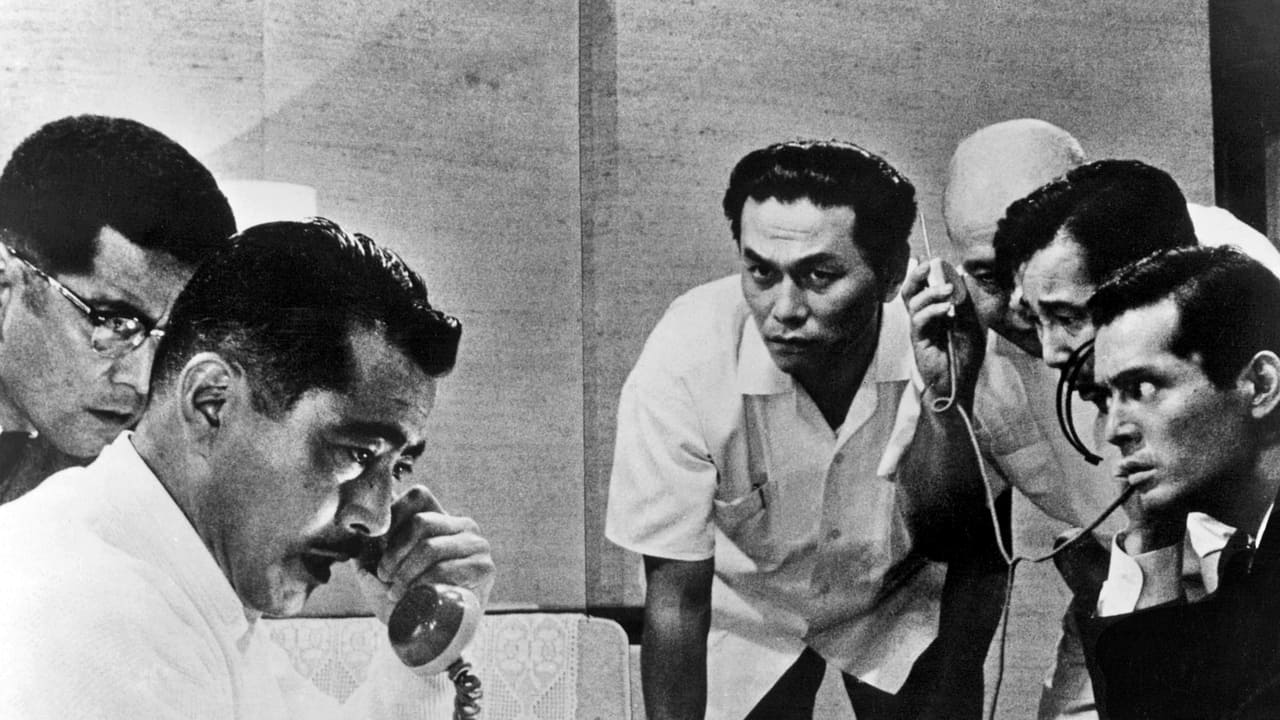



Who payed the critics
It's hard to see any effort in the film. There's no comedy to speak of, no real drama and, worst of all.
View MoreNot sure how, but this is easily one of the best movies all summer. Multiple levels of funny, never takes itself seriously, super colorful, and creative.
View MoreIt really made me laugh, but for some moments I was tearing up because I could relate so much.
View MoreKurosawa made such good movies, even gems like these get ignored. Though filmed in 1963, it holds up really well even today and doesn't feel like a old movie because it was way ahead of it's time. The Kidnapping itself was orchestrated so well, it led to rise in Kidnappings in Japan post the movie's release. The movie must be watched for another reason, the Police procedure. It's depicted with realism, intensity, yet it never becomes complex for an average viewer. The best thing about Kurosawa, much like Ray, is the fact, his movies are simple yet so powerful, and are accessible to everybody. Highly recommended.
View MoreHigh and LowThe key to being a successful kidnapper is never targeting families with twins or triplets. However, the dimwitted abductor in this thriller can't even swipe the correct kid.Just as capitalist Kingo (Toshiro Mifune) is about to use his enormous wealth to acquire a company, he receives a phone call from a mysterious man informing him that his son has been kidnapped and that a ransom is demanded.While Kingo agrees to put his purchase on hold to save his son, that all changes when it is learned that the captors took Kingo's chauffeur's son by mistake. Worse, they still want Kingo to pay the ransom.A classic kidnapping caper elevated by an impossible moral quandary, director Akira Kurosawa's black-and-white 1963 adaptation of the American novel is beautifully shot, briskly pace and dynamically performed by Kurosawa's main muse Mifune. Nevertheless, abducted Japanese children are still expected to maintain a respectful GPA. Green Light vidiotreviews.blogspot.ca
View MoreEven though Akira Kurosawa is mostly associated for his samurai classics, I'm really not a fan of them, besides his later opus Ran. I admire many of Kurosawa's techniques but I don't connect. High and Low is the first of his modern day films I've seen since Ikiru many years ago and although they're as respected but not as popular as his samurai films, I think I've found the niche where I love Kurosawa. The first hour is set in one place, boasting a riveting moral dilemma ripe for the textbooks. It's a fascinating psychological study to watch how protagonist Mr. Gondo's behaviour differs between the threat of holding his son hostage to the actual threat of holding an employee's son hostage, thanks to Toshiro Mifune's great performance. No matter what way the character plays it from there, the damage is already done and his vulnerability is revealed. It kind of makes you glad you aren't rich. This first half is ready for a stage adaptation and I wish it was the whole film as it relieves the tension mid-way. The rest of the film is a police procedural following the investigation to catch the extortionist. It's interesting and engaging but not quite as compelling. The film would have benefited from not skipping round its ensemble too much, especially after committing to Mr. Gondo at first so much. I would have also liked to have known more about the antagonist's motivation outside of a case of class jealousy, but I guess that was the point that the film was trying to illustrate. High and Low is still an essential entry in Kurosawa's canon, one that set the bar and foundation for cop thrillers to come.8/10
View MoreThough High and Low is a great film in its own right and a shining example of Akira Kurosawa's genius and the success of this structural experiment, the stunningly canvassed characters with their layers and depth, wonderful performances, fluid camera-work and beautifully lit sets. The film does not rank amongst the best of Kurosawa's body of work; the ending in many ways felt unresolved or at least resolved to an extent but in an unsatisfying manner. Gondo makes the choice which he feels is the moral decision and gives away all he owns to save another's child and forgoes his opportunity to own the company he has given his blood, sweat and tears to. Even though the boy lives, they catch the kidnappers and most of Gondo's money is recovered and returned to him, it's not enough. His house and all of his belongings are repossessed and he has to start all over again. But in saying that isn't that Kurosawa's point? How much do we actually need, how much is enough and how much of what we own and posses is just overindulgence? The social commentaries made by Kurosawa fifty years ago still ring true today in the modern economic climate. Lessons can be taken from the film through both perspectives of the class spectrum; the rich would not exist without the poor and vice verse. But if equality is ever to be reached society must find a way to bridge the gap between the class', perhaps if the wealthy took a a page from Gondo's book and made a sacrifice that would be a start.
View More